 Fire Emblem: Shadow Dragon & the Blade of Light is the first game in the Fire Emblem franchise. It features FE luminary Marth, and is arguably the basis for literally everything that has ever happened in the Fire Emblem universe. It was originally released for the Famicom in 1990, but was translated and shipped over to America thirty years later. While the “Nintendo Switch Version” had a handful of features added to make life a little easier (being able to rewind a round is always helpful), it is 95% faithful to the original release. This means it is very much “a NES game” in scope and ability, and also the first toddling steps of a franchise that all but required refined gameplay to reach a more publicly acceptable level of “good”.
Fire Emblem: Shadow Dragon & the Blade of Light is the first game in the Fire Emblem franchise. It features FE luminary Marth, and is arguably the basis for literally everything that has ever happened in the Fire Emblem universe. It was originally released for the Famicom in 1990, but was translated and shipped over to America thirty years later. While the “Nintendo Switch Version” had a handful of features added to make life a little easier (being able to rewind a round is always helpful), it is 95% faithful to the original release. This means it is very much “a NES game” in scope and ability, and also the first toddling steps of a franchise that all but required refined gameplay to reach a more publicly acceptable level of “good”.
What I am saying is that this game is rough, y’all.
And playing a game from thirty years ago for the first time on “its own terms” reminded me of all the crap I have had to put up with in nearly forty years of playing videogames. So, with no particular order or organization, please enjoy a list of painfully subjective complaints about the videogame industry from a cranky old gamer that just had to watch his Pegasus knight die in her first battle.
· Fire Emblem: Shadow Dragon & The Blade of Light is emblematic of localization woes that lasted decades. Want to know what happened back in the day if a game had too much text, and a company arbitrarily decided they didn’t feel like localizing it? Violence happened! I lost my best friend in the Seiken Densetsu 3 wars!
· Fire Emblem’s publisher, Nintendo, has always had the reputation for manufacturing reliable hardware. I have never understood this, because I spent approximately a million hours of my childhood blowing on carts and praying to Nintinficus, God of Gaming, that I wouldn’t just see a flashing blue screen every time I wanted to play Super Mario Bros. 3. Despite owning every “cleaning kit” and knowing every “trick” available, this was apparently an okay thing for gamers to have to deal with.

· Even before Fire Emblem, we had the “arcade days”, where you had equal odds of putting a quarter into something fair like Donkey Kong, or that Battletoads cabinet where a boss was distinctly invincible for the first thirty seconds of the fight (but you certainly were not). Some arcade cabinets were downright predatory, and it is hard to say whether or not the entire beat ‘em up genre was ever honest.
· Back at home, almost as soon as “gaming” was a word, game designers felt threatened by the rental industry, and artificially inflated difficulty/”game length” in ways that were bonkers. Nowadays, we barely notice some of these issues thanks to emulation/save states, but in the before times, it could take a week to complete a game that would otherwise take twenty (enjoyable) minutes. Let me tell you about the many codes that had to be entered just to continue after a game over in Double Dragon 2.
· Relatedly, I have always been told that save batteries on cartridges were expensive. As a result, many games included “password systems” that were often as obtuse as they were eccentric. Is that a l or an I? Better figure it out, or you will lose all of your progress forever.
· And speaking of wasting time, many games had interfaces that qualified as “good enough”. Final Fantasy (1) was a game that absolutely required purchasing potions by the pallet if you were going anywhere without a White Mage, but you could only purchase one potion at a time. “Protips” for Final Fantasy included the hint of buying a turbo controller just to assist in item shopping. Fire Emblem SD&TBOL’s round-wasting item juggling is similarly a drag.
· There were two solid decades of games finding new and interesting ways to screw up a leveling system. Final Fantasy 2 (j) is the Ur-example, but, say, a strategy game wherein your defenseless healers can only earn experience points through being walloped by opposing forces is currently sticking in my mind. And never mind that so many early titles had no idea how to distribute experience points, so a party of one unstoppable juggernaut and forty level 5 hangers-on was all but expected by the endgame.
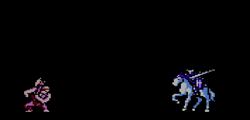
· Updates and “always online” are a pain nowadays, but we used to never have the possibility of updates. Final Fantasy 3/Final Fantasy 6 is one of the best games ever released, and it has more glitches than one of the hour-long episodes of Reboot. There are basic things like the “darkness” status effect not doing anything, and apocalyptic glitches like “use sketch on the wrong enemy, and your save data is erased.” There was never any illusion that these problems would ever be fixed. You paid $80 for the latest Square release, and you lived in fear of using one of the characters because one time she inexplicably borked your cartridge. Maybe, if you were lucky, an issue of Gamepro eventually explained what happened.
· Do not get me started on PC gaming. Even beyond the old yarn of purchasing a PC title before approximately 2005 being a crapshoot of whether your graphics card would actively puke on you in response to a spec requirement, there was an entire genre of games that existed exclusively to sell strategy guides or encourage the usage of “tip lines”. Yes, back in the days before DLC, game companies made additional cash on selling you solutions through 1900 numbers. Nikstlitselpmur!
· And since I have gotten started on PC gaming: Nintinficus fugging help you if you had to deal with any “anti-piracy” measures from the era. Everybody always wants to talk about things like pirate wheels or whatever other “feelies”, but there were random games that would include some weird “look at the manual” puzzle like 30% of the way through the game, and it was clearly an anti-piracy thing in retrospect, but at the time, it was just confusing as heck. You want me to look where for what now? Something in the real world is the solution to beating a level? Huh?
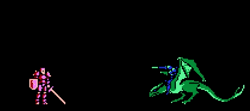
· Back to the console wars: I own a 32X and a Virtual Boy. I might own their entire American-released game libraries. I am talking about six games. Adjusted for inflation, the Virtual Boy had a MSRP of $365.30, and the 32X was $333.89. Note that the latter required already owning a Sega Genesis (but you did not need to own a Sega CD… not that that was remotely clear, either).
· Some games created the lovely concept of a “lose condition” based on escorting a particular person or object. This has never been fun, but many titles included the terrible flaw of not allowing for any way to “heal” the object of your enemy’s scorn, so every tiny hit on your VIP becomes less of a “oopsie” and more of a ticking time bomb. This is doubly noticeable in games where there are health refills for your main character every seven feet, but nothing for your hapless charge. And then there are games where one character must survive, and literally every opponent is programmed to target them as a first priority…
· Moving forward a little bit, let me tell you about the horrors of any game that wasn’t a sandbox or RPG in the Playstation 2 era. A publisher needed that bullet point for “50 hours of gameplay”, so there were ridiculous “unlock requirements” for grand swaths of games. A memory card with everyone unlocked in a fighting game was more valuable than the game itself. “Costume unlocks” is a phrase that sends a chill down my spine to this very day. I will take a “fighter’s pass” for $15 any day over “beat 100 characters in survival mode to unlock Costume #4”.
· This era also saw a fair few “update releases”, like how Devil May Cry 3 has two different versions thanks to player feedback. On one hand, this was a step forward beyond “this is broken forever”, but it also meant buying any given game “new” was a gamble. Videogames going on sale was one thing, but now there was the possibility that you could pay full price at release, and then a better, cheaper version would be available a year later? And save transferring was somehow impossible? So I wasted my money and time if I played the old version, but wanted to see the inevitable new super boss?
· And, against all odds, when those upgraded versions were not even released in your home country, it was somehow worse.

· Videogame store online “credits”. God help me if I have to figure out the exchange rate between Microsoft points and eshop Nintendo points. Just another barrier to downloading Mega Man 9 that existed as some kind of weird tax dodge.
· What stage of capitalism is it where you must open an incognito browser window to check a website about the weather because you are trying to avoid a torrent of malware that could destroy your expensive computer equipment? Oh, wait, that has nothing to do with gaming. I’m just getting angry at everything.
· Everybody seems to gloss over how the Xbox 360 was dominant in its console generation because it was the only place that had a damn clue what to do with online play. And it wasn’t great! But Sony and Nintendo chasing what little was available was extra scary. In a weird parallel to the PC days, it was a crapshoot on whether you were buying a game that would have “easy” online play (through GameSpy, for some reason?), or you had to be subscribed to a proprietary online service.
· Any time a player must rely on an AI party member, they are going to have a bad time. It is one thing to see an uncooperative wizard back on the NES when useless spells were often being brandished about, but it is remarkable that the exact same issue was happening by the time of Playstation 2’s Persona 3. How in Thanatos’s name is that allowed?!
· And through it all, “big studios” have always been chasing the latest popular genre, so whether we are looking at FF7-alikes, GTA-alikes, Skyrim-alikes, or whatever, there were about 50/50 odds that your favorite franchise was going to include “RPG elements” or some other buzzsystem at the expense of actual fun. We are always, at any given moment, about three seconds away from The Legend of Zelda having a Deathmatch mode.
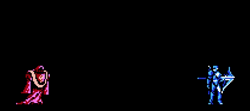
We have come a long way since the days of Fire Emblem: Shadow Dragon & the Blade of Light. Whether it is online-based DLC bullshit or a single level in Fire Emblem requiring an uninterrupted hour of your life, “gaming” has always had a healthy connection to absolute nonsense.
SBC #16 Marth & Fire Emblem: Shadow Dragon & the Blade of Light
Marth in Super Smash Bros Ultimate
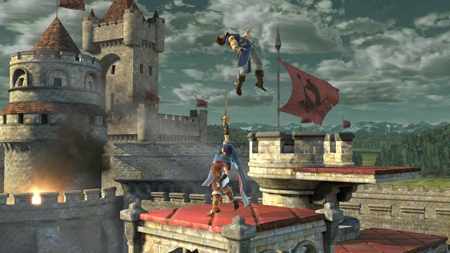
- He any Good? Hey, basing that down special on countering makes a lot more sense after having played Fire Emblem! The original anime sword guy set the standard for every future anime sword guy, and, while there is nothing all that interesting here, it is pretty impressive for someone that was barely animated in his original appearance. Can you imagine OG Marth jumping?
- That final smash work? Like Marth, Critical Smash is boring, but you can’t fault something that works. Enjoy watching those yellow dots retreat as jigglypuff flies into the stratosphere.
- The background work? Castle Siege is the first Fire Emblem stage listed, so we’re using it. It switches from castle to inside castle… And I guess it is supposed to be deliberately “generic” across the franchise? Are those statues recognizable? And then we have a cave, which does not appear in the franchise until (apparently) the Binding Blade. Can we just get a generic field to properly represent the franchise?
- Classic Mode: A Kingdom of Dragons sees Marth fight against the many dragons in the cast, ending it all with big bad dragon Rathalos. Except Charizard is not technically a dragon. Yoshi is absolutely not a dragon. King K. Rool is so much not a dragon, it isn’t even funny.
- First Appearance: Marth Feels surprisingly similar back in Melee. The counter ability is downright underpowered here, so is this where I started to ignore that skill across multiple characters? And does anyone entertain Marth after Roy is unlocked?
- Smash Trivia: The appearance of “Marth” in Super Smash Bros. Melee solidified our hero’s name’s translation. Sorry, Mars. However, other Fire Emblem characters have appeared as stickers and trophies in Smash Bros, but later had their names retranslated when their actual games appeared stateside. Shiida was a sticker before we saw Caeda…
- Amiibo Corner: He looks appropriately regal, and that “blade of light” is impressive. For some reason, I cannot stop looking at his immaculate boots. You would think a dude that does that much walking would have more mud on his shoes.
- Does Smash Bros Remember Today’s Game? Fire Emblem is the Citizen Kane of the franchise, and it is difficult to say if any given reference is distinctly about Shadow Dragon, or any of the many, many later Fire Emblem games that copied whole sections of the game wholesale. At least Tiki consistently traces back to today’s feature.
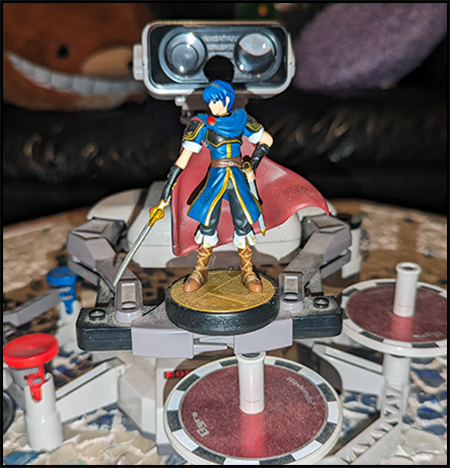
Marth in Fire Emblem: Shadow Dragon & the Blade of Light
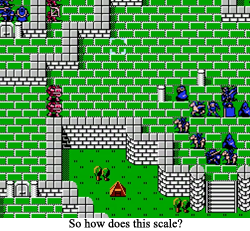 System: Nintendo Famicom back in the day, but now available on Nintendo Switch. The original version has also seen repeated releases on Nintendo online services going back to the Wii and 3DS… but only in Japan.
System: Nintendo Famicom back in the day, but now available on Nintendo Switch. The original version has also seen repeated releases on Nintendo online services going back to the Wii and 3DS… but only in Japan.- Number of players: A single player is responsible for the fate of Marth’s army.
- For the Remake: Like OG Final Fantasy, Fire Emblem: SD&TBOL has seen multiple remakes that attempt to mitigate the issues of this early title, and also flesh out Marth’s companions in more significant ways. And some additions feel weirdly sadistic. Everyone gets their own unique death statement? Isn’t that just twisting the knife, Fire Emblem?
- I am still angry: It is not that NES (or whatever) hardware couldn’t handle some quality of life improvements, it is that design decisions clearly chose not to. For an obvious example: a unit cannot purchase an item/weapon and send it directly to storage, which means that a unit with a full inventory cannot purchase anything without excessive juggling. However, if a soldier receives an item from an enemy drop, it will immediately be stored. Somebody chose not to connect those two actions, and I am mad as hell.
- Favorite Class: Pirates are to Fire Emblem as Vikings are to Final Fantasy 3. I want more job classes that persist through franchises that are based on nautical pillaging. The fact that you only get one makes the class all the more valuable.
- Favorite Character: I guess Caeda wins by virtue of being one of the few characters that actively impacts the plot (Marth being the only other fighter that qualifies), and thought to bring her flying horse to the war. I respect that in a woman.
- Say something nice: I like the primitive character art. It looks very “80’s anime as channeled through a Windows 95 icon”, and I appreciate that aesthetic. Though it does make Jagen look like a cyborg.
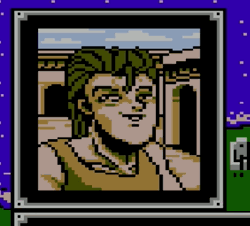 Legacy: I was surprised when the save screen featured Anna. I assumed the franchise’s “Cid” came along later, but she was right there from the beginning. Why hasn’t that wily merchant become a Smash Bros character yet?
Legacy: I was surprised when the save screen featured Anna. I assumed the franchise’s “Cid” came along later, but she was right there from the beginning. Why hasn’t that wily merchant become a Smash Bros character yet?- Special Ed: Despite having no great love for the franchise, I could not resist the “special edition” release of Fire Emblem Shadow Dargon & the Blade of Light. And complete with the faux Nintendo Power poster, 80’s anime box, and trophy cartridge, I do not regret this hunk of plastic. There might not be a physical game involved, but what is there is sure pretty to look at.
- Did you know? The official release date of this game was April 20, 1990. So that thirtieth anniversary edition that made it across the Pacific should have been released in April 2020, not December 2020. That said, I seem to recall something was going on in the Spring of 2020, so that may have been the reason for the delay.
- Would I play again: Do you have any idea how long and annoying this game can be? I wrote an entire article just talking about being annoyed! It was that annoying!
What’s next? I would like a certain speed demon to show us his moves, so Captain Falcon is ready to race. Please look forward to it!
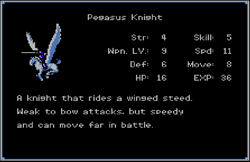
If you die, I will reset the game for you.
[…] (Peach, Zelda, etc) or contain iconography that ties it to its home franchise (see the flags on Castle Siege). Cities are distinctly their cities (Onett, Fourside) and bridges are similarly geographically […]